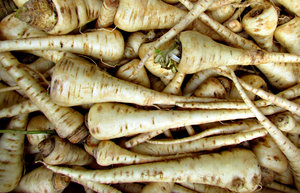
Herbicide treatments may need to be repeated in following years. New seedlings will often germinate and emerge after glyphosate has been applied, meaning that follow up applications may be required.įor the best results, apply herbicide to the leaves of actively growing plants in the spring, followed by a summer application for missed plants that are still growing. Glyphosate is a broad spectrum herbicide that kills green plants that it comes into contact with. Herbicides containing glyphosate can be an effective tool to control larger populations of wild parsnip.

If you are considering using a pesticide, read the product label before buying it to ensure it can legally be used on wild parsnip. Herbicides that may be used for this purpose include those containing the active ingredient glyphosate. While many uses of herbicides are banned, certain herbicides may be used to control plants that are poisonous to humans who touch them, such as wild parsnip. In Ontario, herbicide use, storage and disposal is regulated under the Pesticides Act. The area must be replanted after the plastic is removed to replace desirable plants and rehabilitate the soil. The plastic should be left in place for at least one season to ensure the roots are smothered. Cut plants will likely re-sprout after mowing, so it is important to combine mowing with other control methods.Īnother method of control is to cover the dug or mowed areas with black plastic to smother new growth of all plants. Pulling up the plants is impractical for larger infestations, but mowing can be effective if begun just after peak blooming, but before the seeds set in the late summer or early fall. Follow-up digging will be required every few weeks to deal with re-growth (if the taproot was not completely removed) or missed plants. Digging is most effective in the spring when the soil is moist and the taproot is more easily removed. Put non-disposable clothing in the laundry and wash yourself immediately with soap and water.įor a small infestation in a yard or garden (fewer than 100 plants), dig out as much of the taproot as you can with a sharp shovel or spade. Finally, take off your protective eye wear. Wash your rubber gloves again and then take them off. Wash your rubber gloves with soap and water, then take off your spray suit or outer clothing.


After working around the plant, remove your protective clothing carefully to avoid transferring any sap from your clothing onto your skin. Spray suits are commercial-grade waterproof coveralls. A disposable spray suit over your normal clothing provides the best protection. Wear protective clothing, including waterproof gloves, long-sleeved shirts, pants and eye protection. The area must be monitored for several seasons to ensure complete eradication.
PICTURES OF PARSNIPS HOW TO
Note: To manage wild parsnip effectively, learn how to identify the plant in both its first-year stage as a small rosette of leaves, and in its second year, as a tall flowering plant. The guide to Best Management Practices for Wild Parsnip describes the most effective and environmentally safe control practices for this species.
PICTURES OF PARSNIPS PROFESSIONAL
To remove larger infestations (thousands of plants), you will likely need a professional exterminator and repeated treatments over several years. Wear protective clothing and dispose of plants carefully, as described below. If you have small clusters of wild parsnip on your property (fewer than 100 plants), you may be able to manage the plant yourself.
PICTURES OF PARSNIPS SKIN
Like giant hogweed and other members of the carrot family, it produces sap containing chemicals that can cause human skin to react to sunlight, resulting in intense burns, rashes or blisters. Its seeds are easily dispersed by wind and water, and on mowing or other equipment. The plant can form dense stands and spreads quickly in disturbed areas such as abandoned yards, waste dumps, meadows, open fields, roadsides and railway embankments. In the second year it flowers on a tall stalk and then dies. It typically grows a low, spindly rosette of leaves in the first year while the root develops. Wild parsnip, which is also known as poison parsnip, is a member of the carrot/parsley family.

See the section Protective Clothing below. Collecting the plant from the wild should only be done with extreme care. Wild parsnip roots are edible, but the sap of the plant can cause severe burns. Since its introduction, wild parsnip has escaped from cultivated gardens and spread across the continent. It was likely brought to North America by European settlers, who grew it for its edible root. Wild parsnip is an invasive plant native to Europe and Asia.


 0 kommentar(er)
0 kommentar(er)
